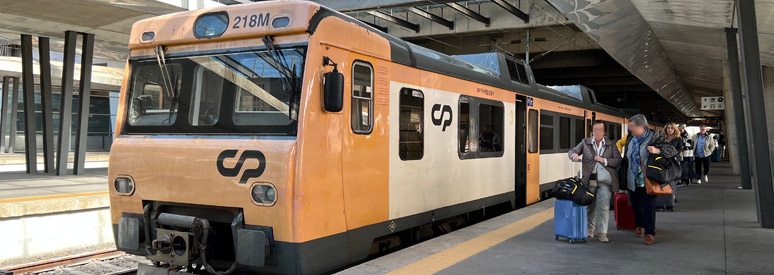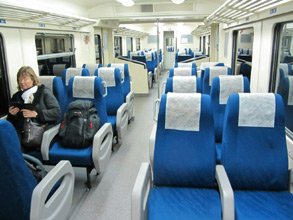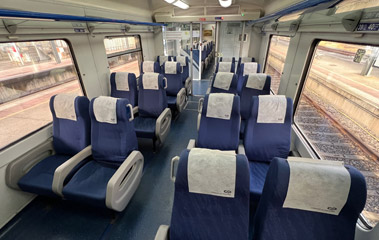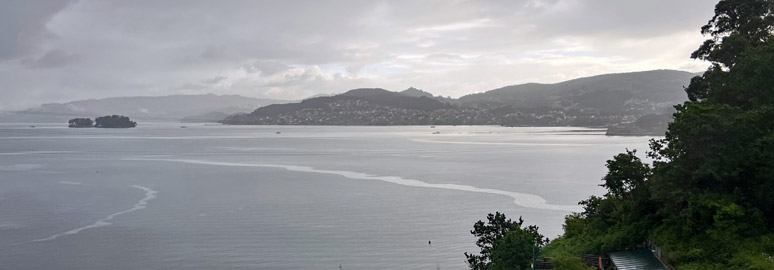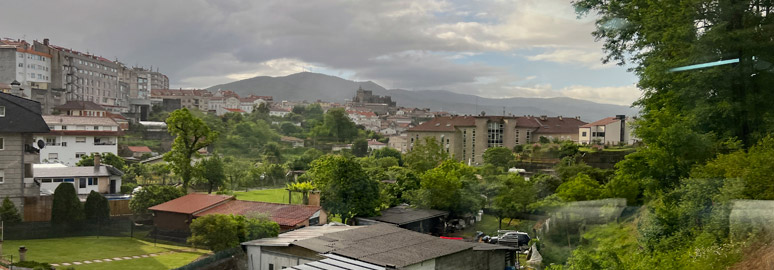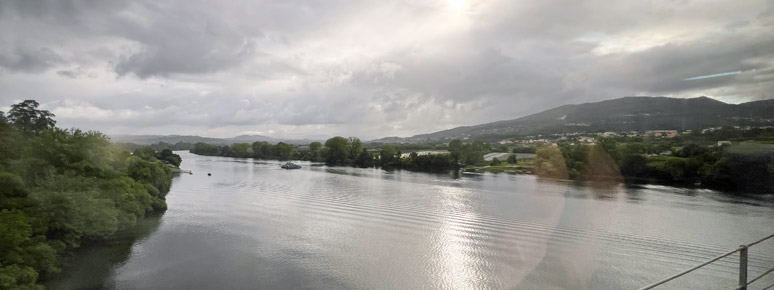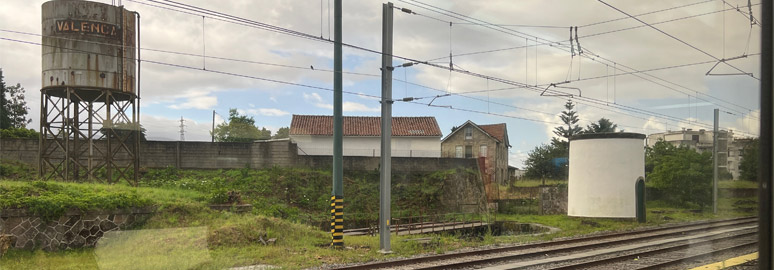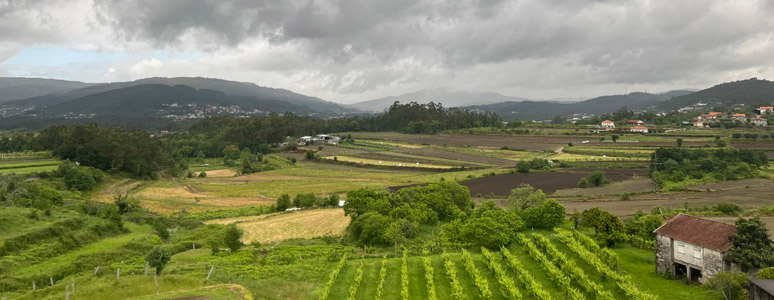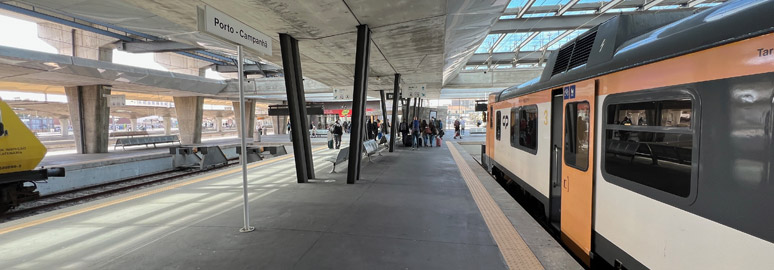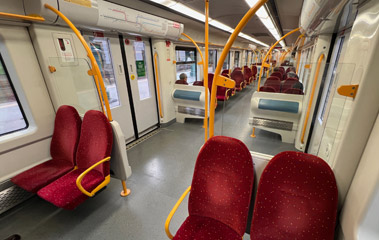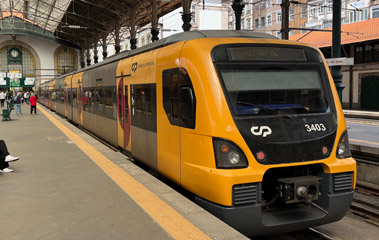A key link between Spain & Portugal
Twice a day, regional express trains link Vigo in Spain with Porto in Portugal. Known as the Celta route, it's one of only two train routes linking Spain & Portugal, the other being Badajoz-Entroncamento which forms part of a Madrid-Lisbon route.
Train times 2025
Read downwards, each column is a train you can take. You can find a .pdf timetable at www.cp.pt.
Vigo to Porto is 174 km (108 miles) by train. Remember that Portuguese time is 1 hour behind Spanish time!
How much does it cost?
-
The regular fare is €16.25.
Children under 4 go free, children under 14 pay a child rate.
-
Limited-availability promotional fares may be available from some vendors from €7.15 upwards.
How to buy tickets
-
Buy tickets at www.thetrainline.com or www.raileurope.com, both easy to use, in €, £ or $, overseas credit cards no problem, small booking fee.
-
Or buy at www.renfe.com in €, more fiddly, may reject some overseas cards, but no fee & can also sell the promotional fares.
-
Booking usually opens several months ahead, but tickets are almost always available even in the day so there's no rush. In theory, you get a reserved seat with every ticket, but it's seldom full so you can move if you like.
What's train like?
The train is comfortable and air-conditioned, 2nd class only, with toilets and luggage racks. There's no catering so bring your own food & drink. The seat backs are 'walkover' backs, you can pull them across to convert a backward-facing seat to a forward-facing seat.
A Celta regional express arrived at Porto Campanhã. Nicknamed camelos by staff because of the air-conditioning humps on the roof.
What's the journey like?
Above, the morning Celta regional express to Porto waits to leave Vigo Guixar.
The train initially runs east along the Ria de Vigo (a Spanish fjord), past Vigo docks and the Ponte de Rande (above).
More coastal views from the train along the Ria de Vigo.
The train then turns south, look out for Tui cathedral (above) in the distance on the left, just before crossing the Minho river.
The train crosses the Minho river, which forms the border between Spain and Portugal. Remember to reset your watch by an hour!
An old water tower and turntable in evidence on the left at Valença.
After calling at Valença, the train speeds across rural Portugal towards Porto.
Arrival at Porto Campanhã, platform 13. I recommend transferring by local train to the lovely Porto Sao Bento station in the old town.
Travel tips
-
There are no ticket barriers or baggage scans, just free access to the platforms in both Vigo and Porto. You can board any time before the doors close and it leaves.
-
The numbers 1, 2 & 3 next to the train entrance doors are the car numbers for reservation purposes, not 1st, 2nd & 3rd class!
-
There's no catering, so bring your own food & drink.
-
Station guides: Porto Campanhã, Porto São Bento.
-
Suggested hotel in Porto: Hotel Vincci Ponte de Ferro, when you see my photos you'll understand why!
Free transfer to/from Porto São Bento
In Porto, you can transfer free of charge by Urbano (suburban) train between Porto Campanhã (2.5 km from the city centre) and the beautiful Porto Sao Bento station in the heart of the old town. The transfer is free in the hour after the Celta train arrives, or in the hour before it leaves.
Urbano trains run every 5-15 minutes taking 4 minutes. At Campanhã, just look for the next train shown with destination São Bento. Sit on the left hand side going towards São Bento for your first glimpses of the Douro and Porto's iconic Luis I iron bridge. You can look up train times at www.cp.pt or the CP app on your phone.


